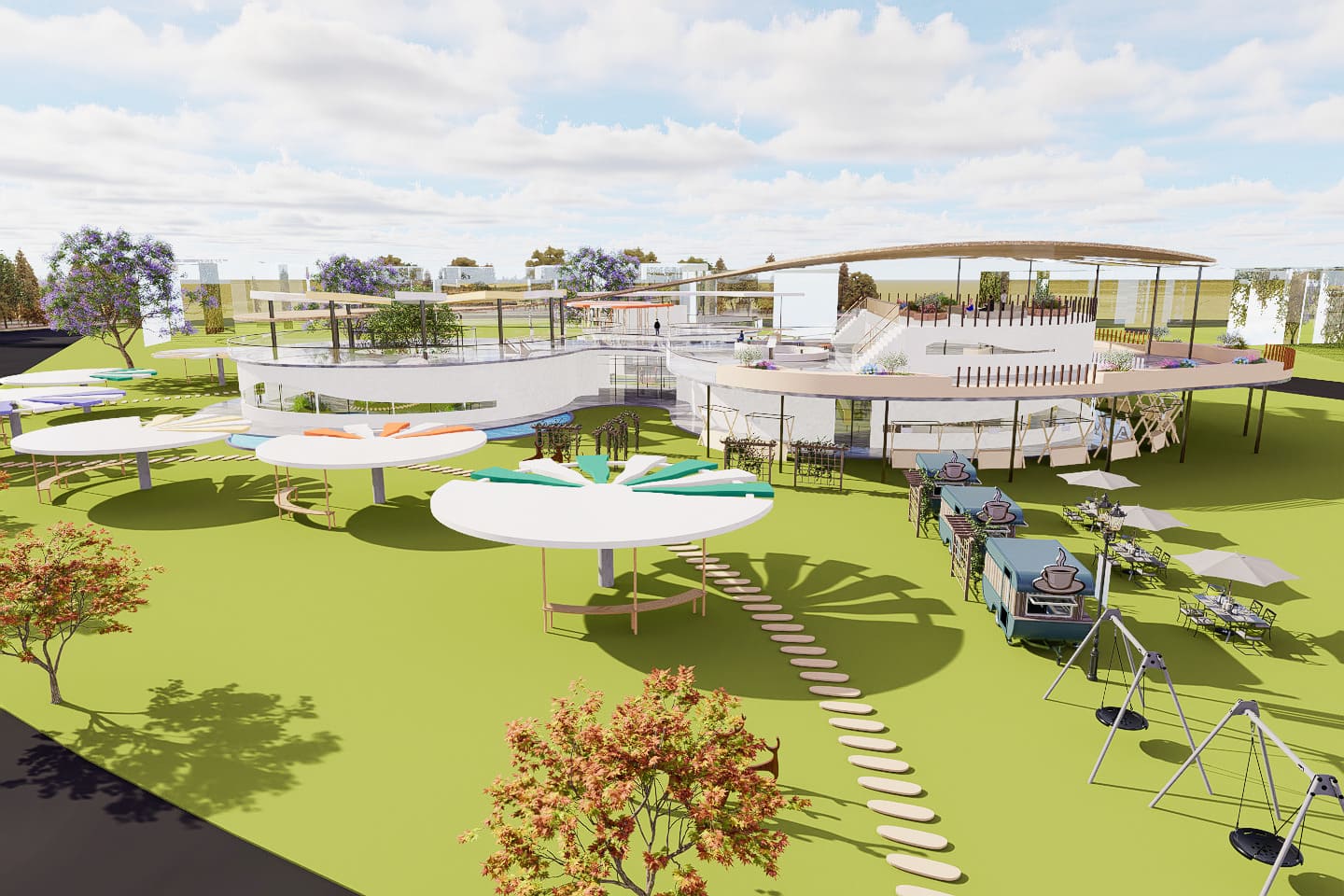
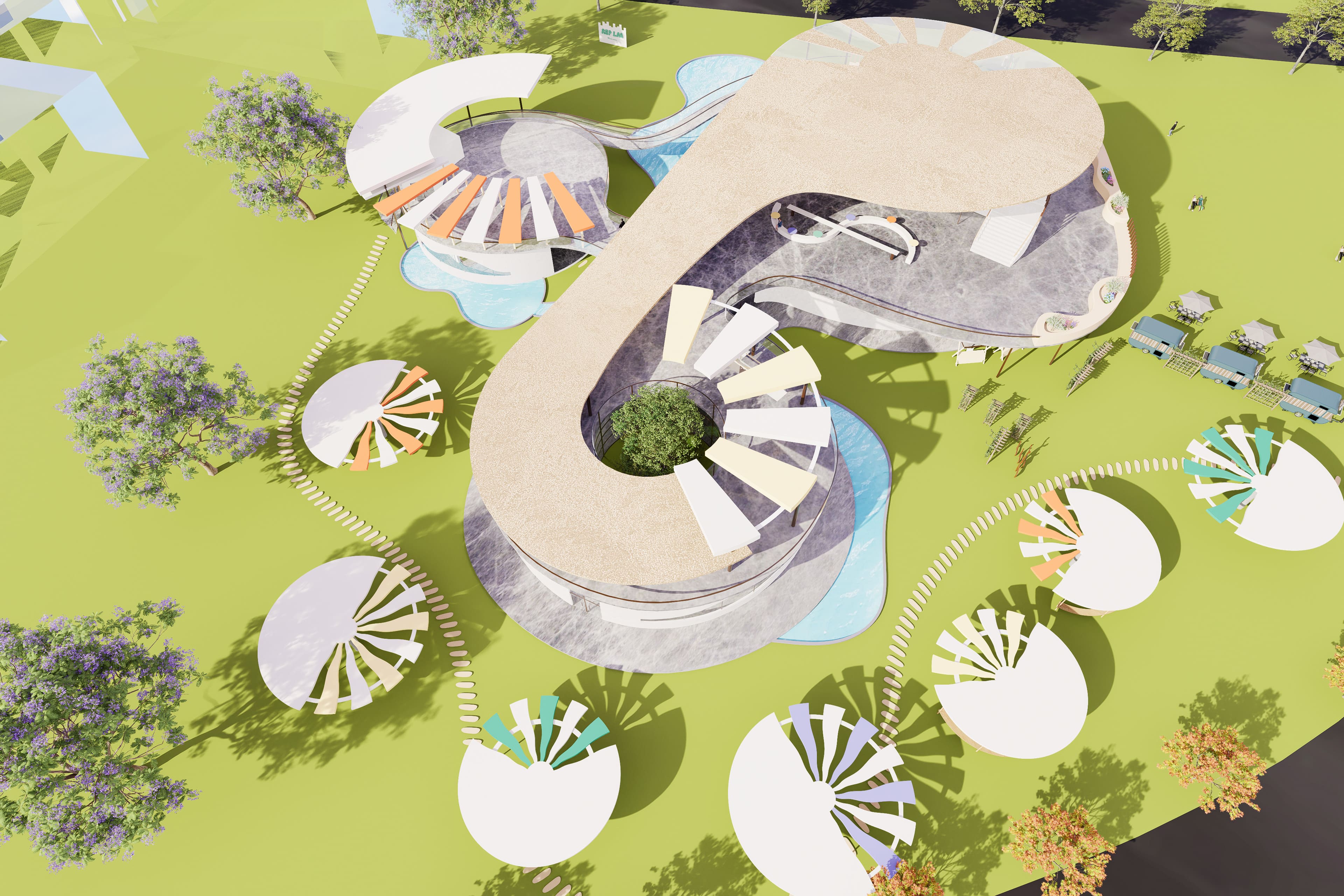
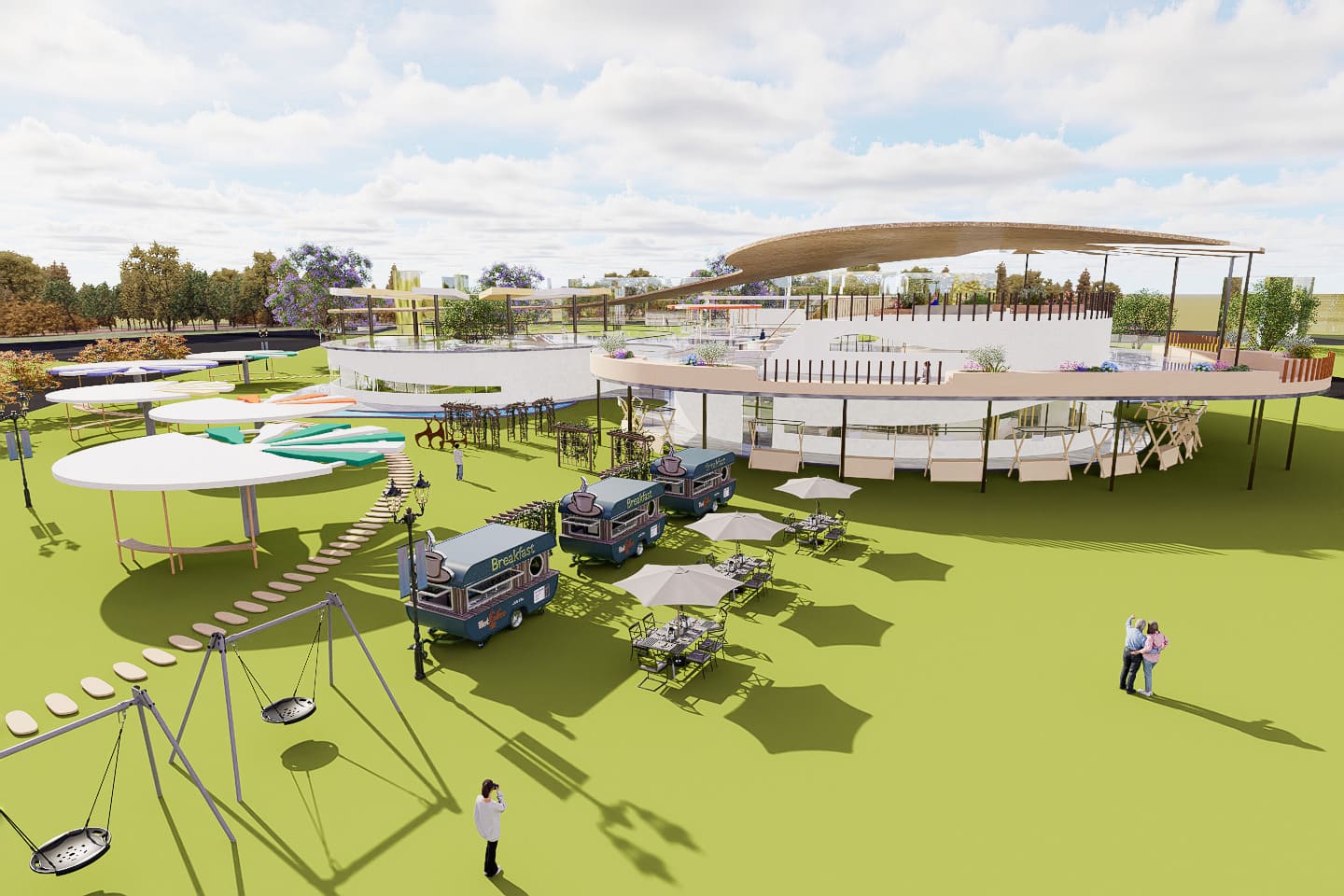
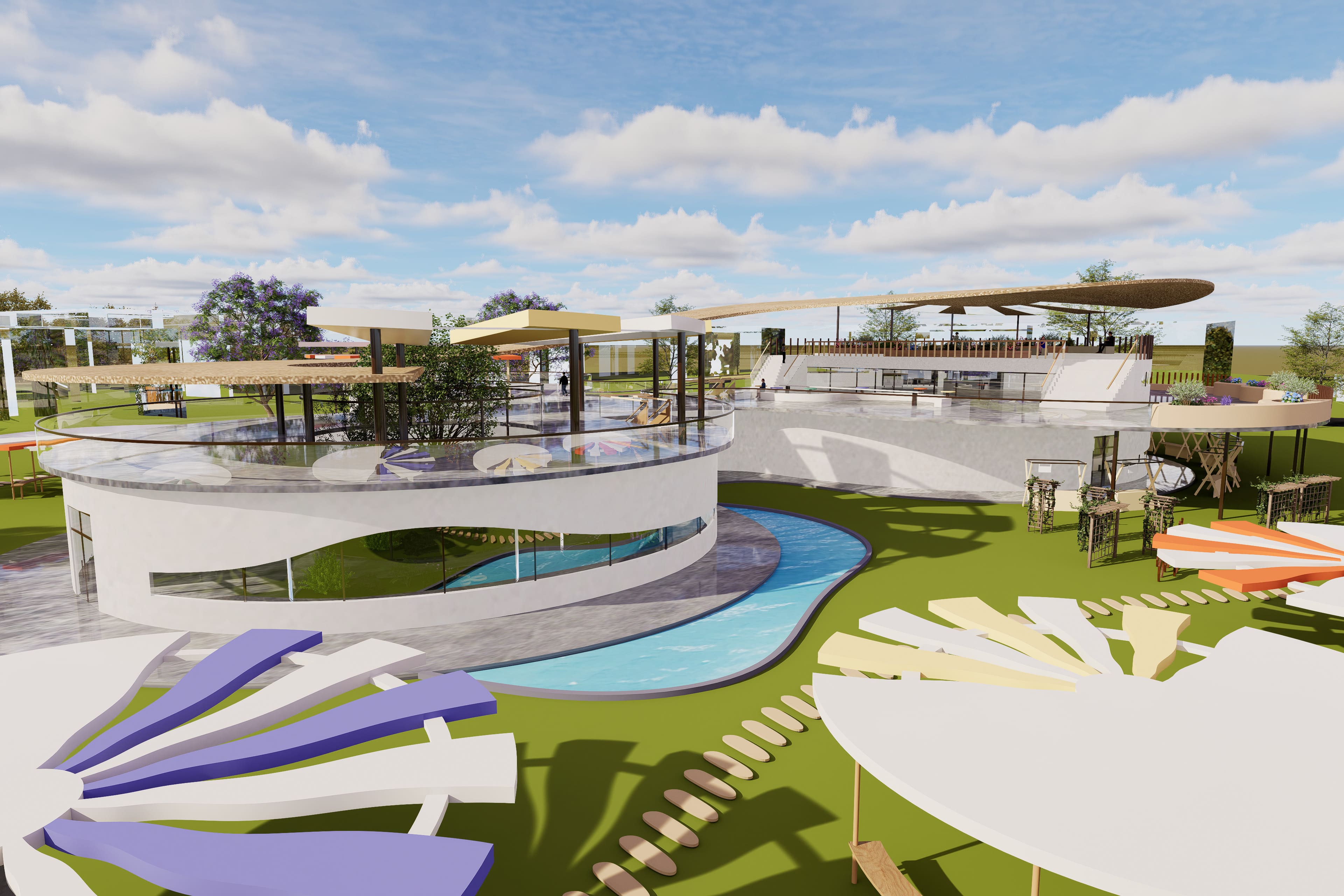
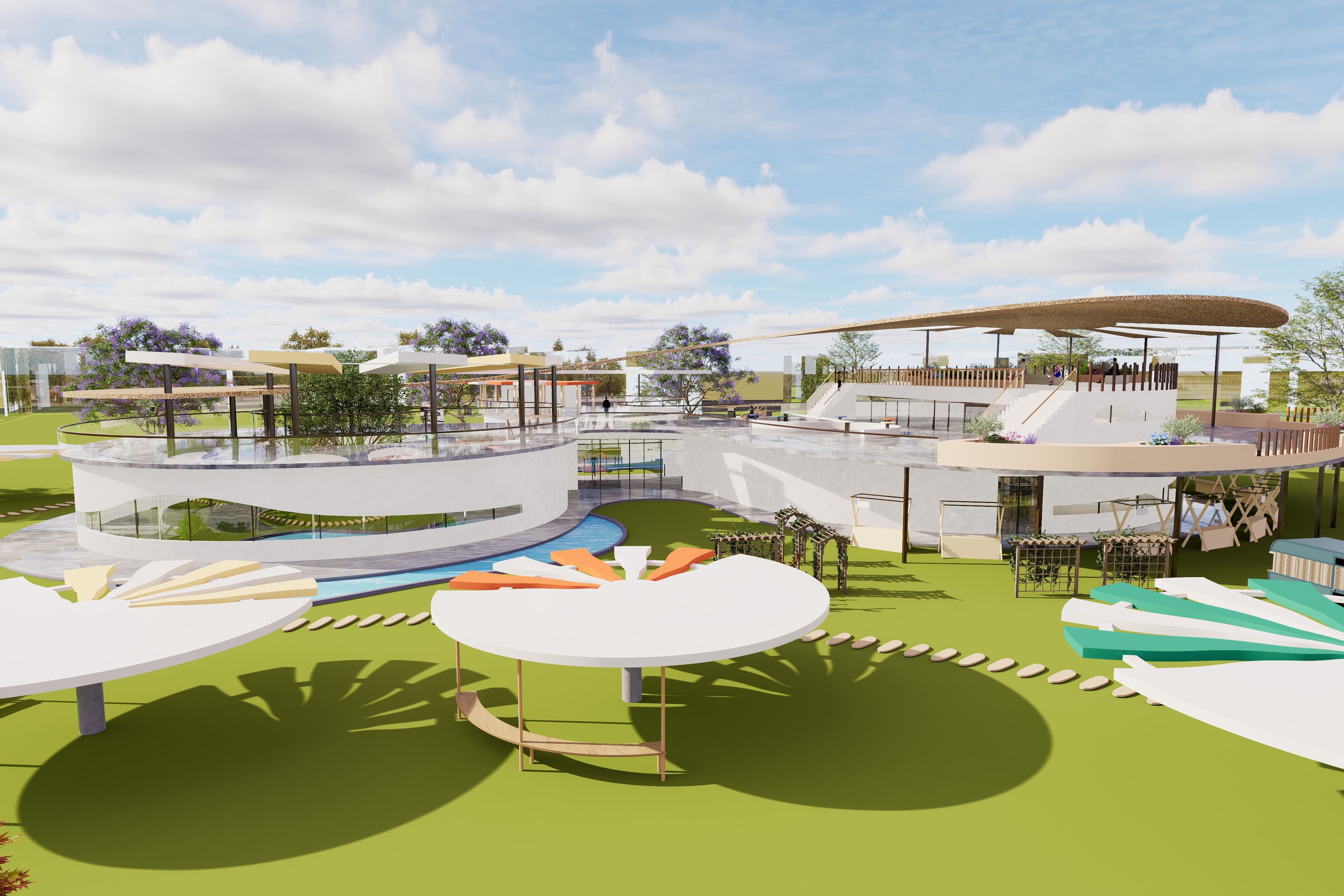
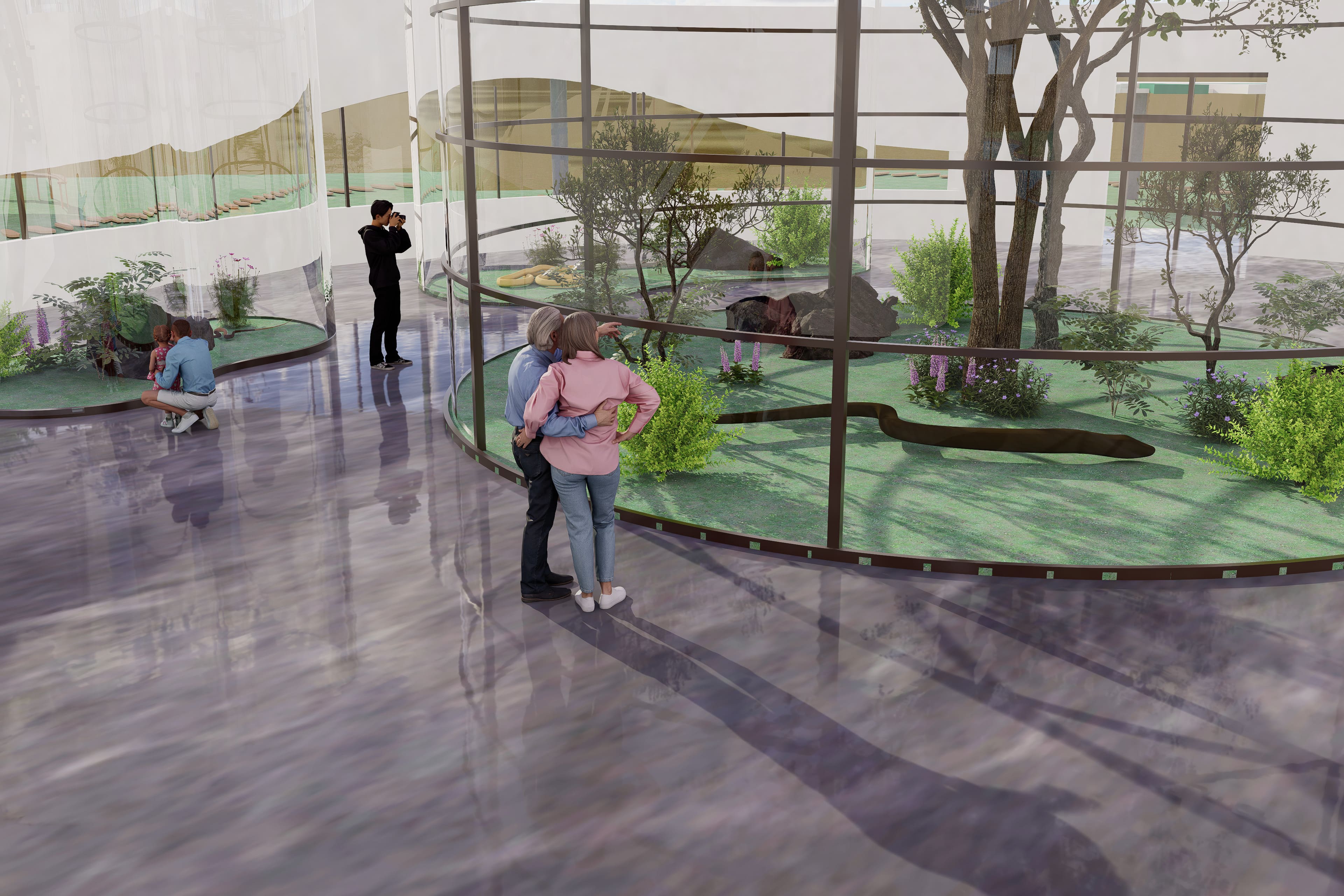
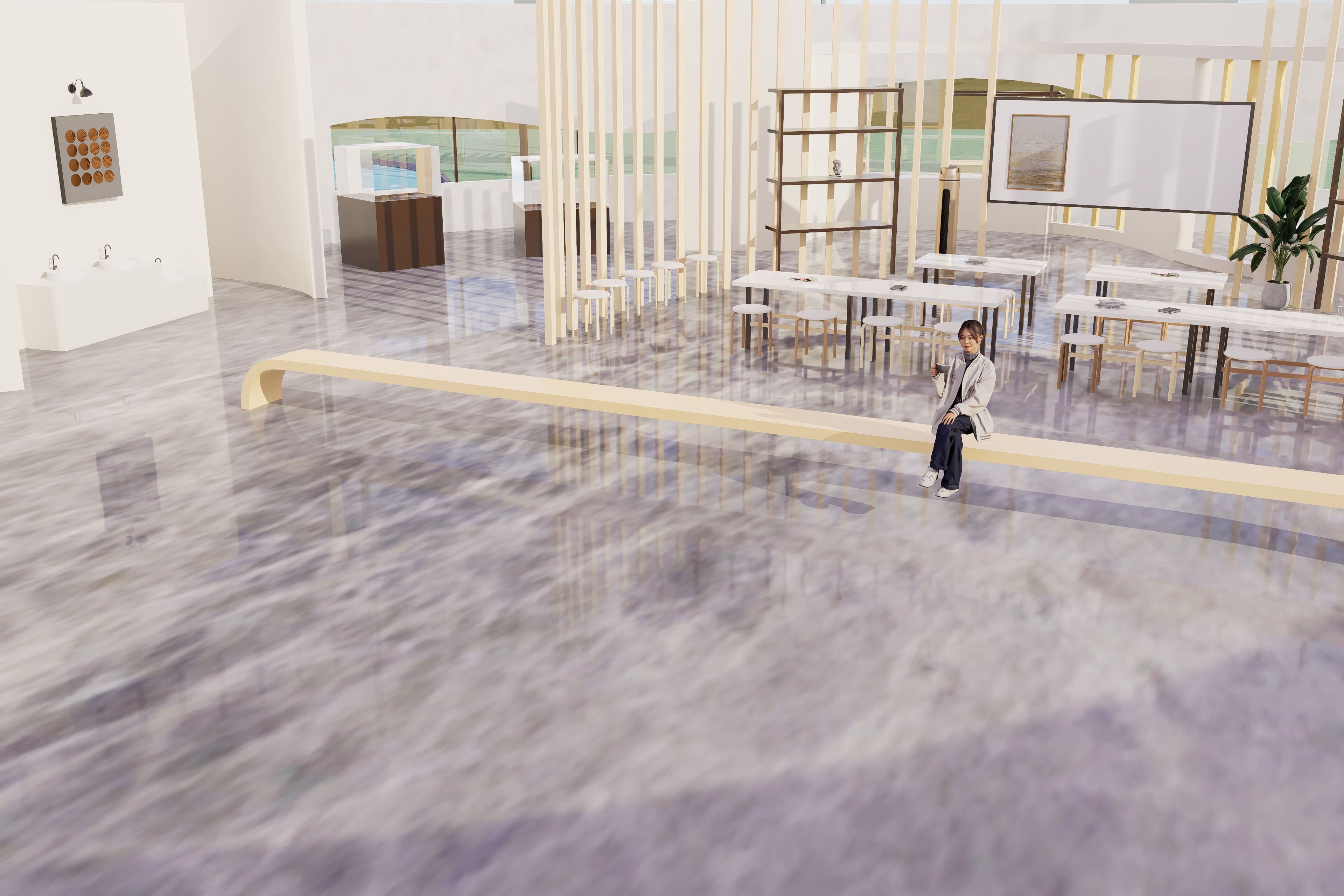
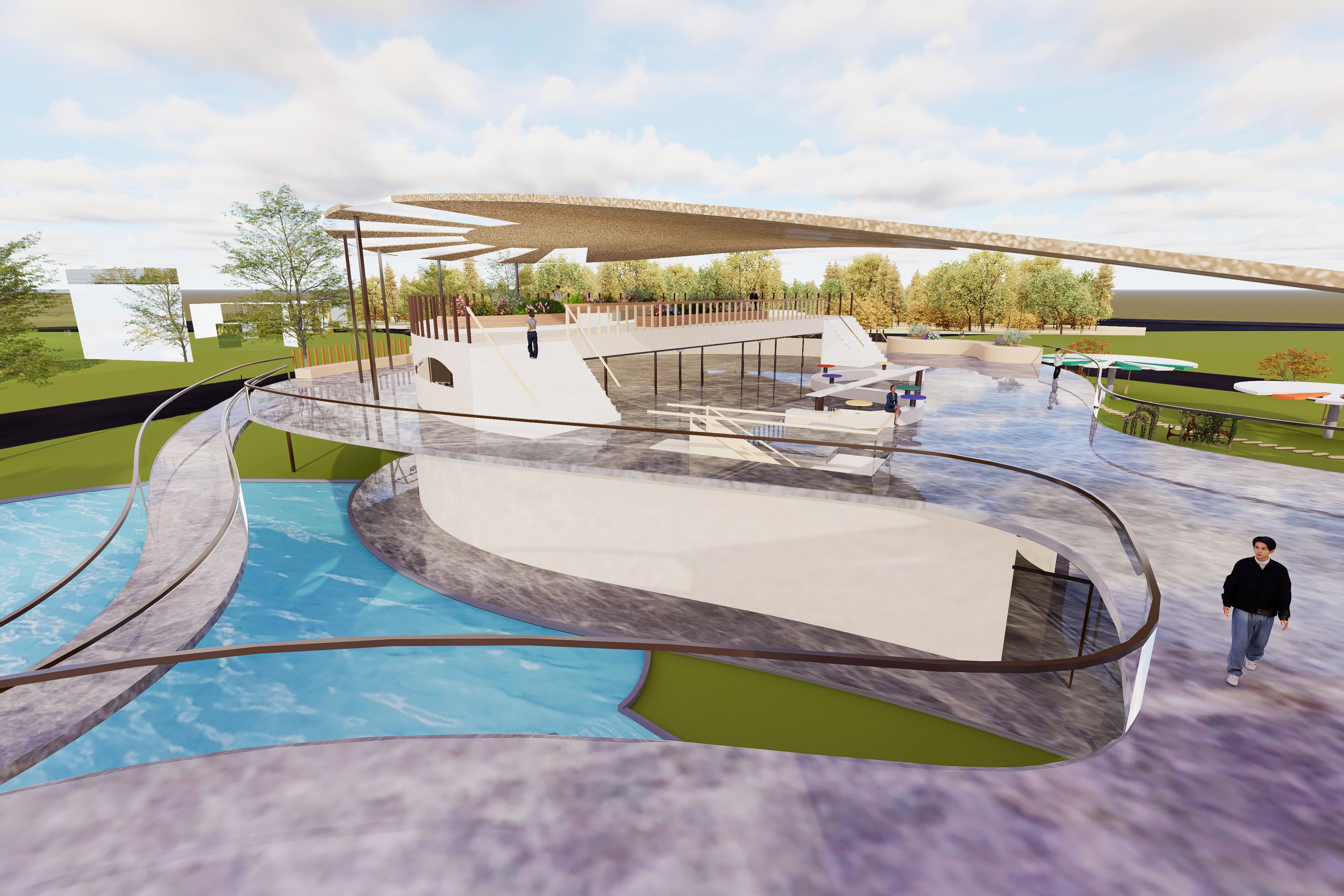
此場域的設計理念圍繞著爬蟲生態教育與保育,致力於讓人們更加了解爬蟲類動物的重要性及其生態環境。場地運用了圓弧與曲線的設計元素,旨在創造一個富有動感與流動感的互動空間,使得每一個角落都能引發人們的好奇心與探索欲。這種設計不僅是對空間美學的追求,也象徵著自然界中無處不在的生機與和諧,讓訪客在進入場域的同時,便能感受到與自然共生的氛圍。
場地內除了包含展演空間,還特別設置了各種生態缸,這些生態缸模擬了不同爬蟲物種的自然棲息環境,讓訪客能夠近距離觀察各種爬蟲生物的生態習性。這樣的設計不僅有助於增強教育意涵,也讓人們在欣賞生物的同時,對於保育的重要性有更深刻的理解。
此外,設計中還包含了交流廳與手作坊,為訪客提供了更多的互動與學習機會。在交流廳中,專業的講解員會分享爬蟲生物的知識,並解答訪客的各種疑問,而手作坊則讓參與者能夠親手製作與爬蟲相關的小物品,增進對生態的了解與珍惜。
這個場域不僅是一個單純的展示場所,更是一個讓人們能夠沉浸其中、深刻體驗生態共融的空間。通過這些精心設計的互動元素,訪客能夠與爬蟲生物建立更緊密的聯繫,從而激發出對自然環境的關注與保護意識,達到教育與保育的雙重目的。
The design of this space centers around reptile ecology education and conservation, aiming to help people better understand the importance of reptiles and their ecological environments. The use of arcs and curves in the design creates an interactive space full of dynamic flow, ensuring that every corner sparks curiosity and a desire for exploration. This design not only pursues aesthetic appeal but also symbolizes the vitality and harmony found throughout nature, allowing visitors to feel the atmosphere of coexistence with nature as soon as they enter the space.
In addition to exhibition areas, the space also features various ecological tanks, which simulate the natural habitats of different reptile species, allowing visitors to observe the ecological behaviors of these creatures up close. This design not only enhances the educational significance but also deepens people’s understanding of the importance of conservation while appreciating these creatures.
Furthermore, the design includes an exchange hall and a workshop, providing visitors with more opportunities for interaction and learning. In the exchange hall, professional guides share knowledge about reptiles and answer visitors' questions, while the workshop allows participants to make reptile-related crafts, fostering a deeper understanding and appreciation of ecology.
This space is not just a simple exhibition venue but a place where people can immerse themselves and experience ecological integration firsthand. Through these carefully designed interactive elements, visitors can form a closer connection with reptiles, which in turn sparks greater concern and awareness about the natural environment, achieving both educational and conservation goals.